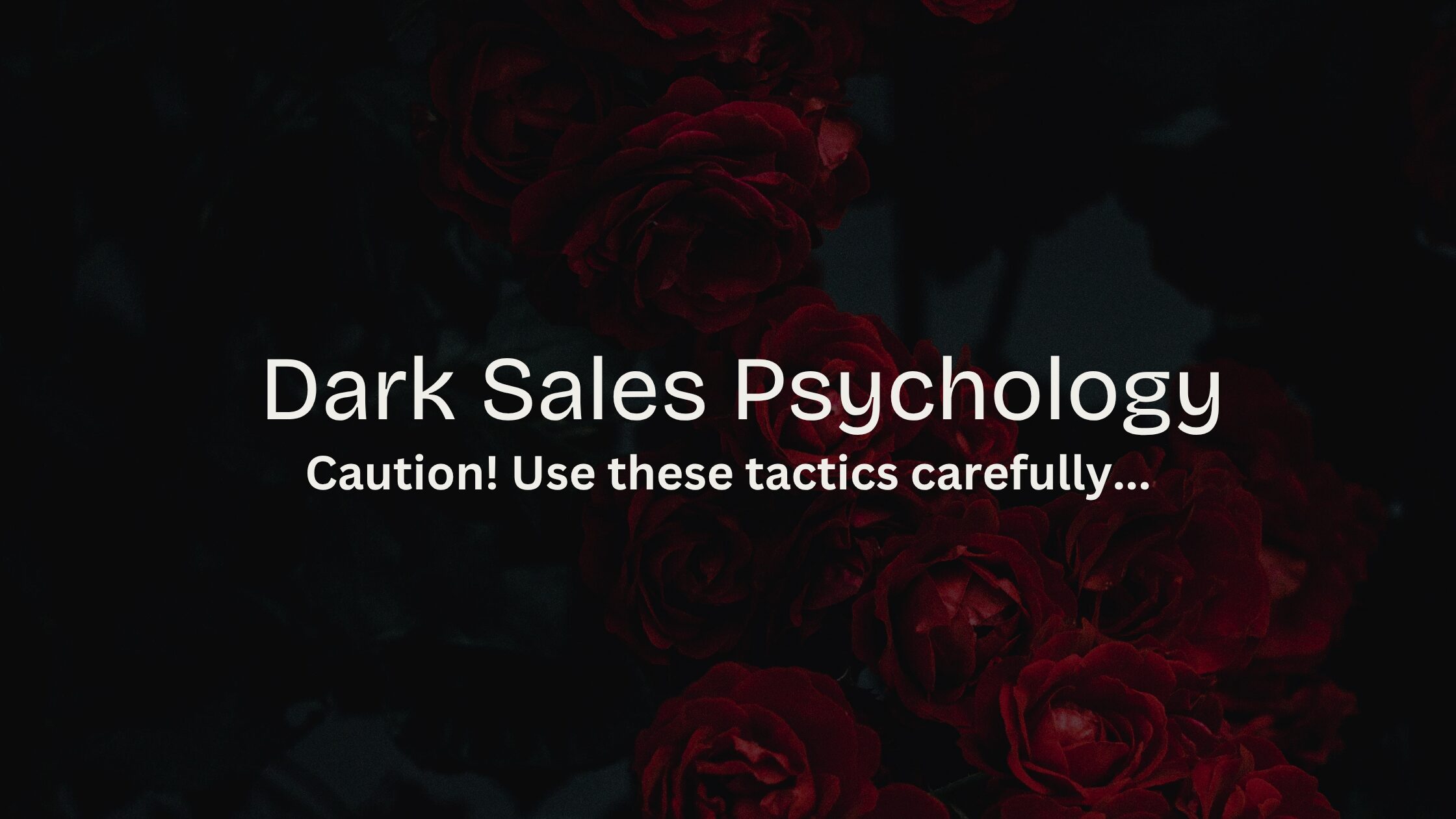These dark psychology sales tactics examples are more than just tricks, they show you how to ethically influence buyers by tapping into emotions, pain points, and desires. If you’ve ever struggled to get people to take your offer seriously, it’s not because your product isn’t good enough; it’s because you don’t fully understand how the human mind makes decisions. In this guide, you’ll learn practical strategies that position you as the solution to your prospects’ problems while boosting your sales without being pushy.
Understanding Dark Psychology Sales Tactics

Understand the power of pain and pleasure: The first rule of selling is simple, people act based on emotion, not logic. The strongest emotions that drive decisions are pain and pleasure. Dark psychology sales tactics examples often start by highlighting a prospect’s pain the frustration, inconvenience, or fear they may be experiencing and then contrasting it with the pleasure or dream outcome they desire. By clearly showing the gap between where they are and where they want to be, you position yourself as the vehicle to help them get there.
Identify latent pain: Many customers don’t even realise they have a problem. This “latent pain” is the hidden discomfort or dissatisfaction in their life. A key dark psychology sales tactic is to gently bring this pain to the surface. By making them aware of what’s missing or what could go wrong if they don’t act, you start creating urgency, without being aggressive.
Amplify the problem: Once the latent pain is visible, the next step is to amplify it. Small frustrations become urgent issues when framed correctly. For example, a boring 9-to-5 job isn’t just unfulfilling; it’s a life wasted. Turning a minor inconvenience into a pressing problem makes prospects more receptive to your solution. This is one of the most effective dark psychology sales tactics examples for creating motivation to act.
Show the dream outcome: Selling isn’t just about highlighting pain; it’s equally about illustrating pleasure. Show your prospect what their life could look like after taking action. Whether it’s freedom, financial gain, or personal growth, painting this vision taps into the desire for change and positions your product or service as the bridge.
Position yourself as the solution: Now that the prospect understands their pain and desires, position yourself clearly as the solution. This isn’t about boasting; it’s about showing that your expertise or product is the vehicle that can take them from pain to pleasure. Dark psychology sales tactics examples often emphasise this positioning as a core step for increasing conversion.
Use relatable stories: Stories are far more memorable than facts. Share real-life examples of how you or your clients overcame similar struggles. These narratives create empathy, show proof, and allow the prospect to picture themselves in the same success story. Every story you tell should subtly reinforce why your solution works.
Reflect and reframe negative emotions: Take the frustrations, doubts, and hopelessness your prospect feels and mirror them back, then reframe these negatives into actionable positives. For instance, fear of failing in a new venture becomes excitement for mastering a new skill. This technique is a staple in dark psychology sales tactics examples, transforming objections into motivation.
Build social proof: People are more likely to act when they see others succeeding. Highlight client results, testimonials, or case studies. When prospects see that someone just like them achieved success with your guidance, it reduces their perceived risk and boosts their confidence to buy.
Turn small problems into big problems: A subtle yet effective tactic is to expand the significance of minor issues. What seems like a small inconvenience can be shown as a barrier to the life they want. This magnification of risk nudges prospects toward taking action sooner rather than later.
Make the pain urgent: Turning realised problems into extreme pain, making the consequence of inaction severe, accelerates decision-making. Imagine framing procrastination as a potential decade wasted. By raising the stakes, you increase motivation without pressure, a hallmark of effective dark psychology sales tactics examples.
Ask strategic questions: Questions guide prospects to their own conclusions. Instead of telling someone they need your solution, ask questions that reveal their own dissatisfaction and need for change. When people verbalise the problem themselves, they are far more likely to accept your solution.
Overcome objections proactively: Every prospect has internal objections, time, money, or ability. Anticipate these objections and turn them into opportunities. For instance, show how a few focused hours a day can produce meaningful results. Framing challenges as manageable steps reduces resistance and strengthens commitment.
Price with confidence: When presenting your offer, state your price clearly and confidently. Many dark psychology sales tactics examples demonstrate that a confident pause after quoting creates perceived value. Prospects rationalise the cost themselves when they believe the results justify it.
Let prospects justify the purchase themselves: Instead of pushing, guide prospects to internally rationalise why they need your solution. By positioning the value and benefits correctly, they mentally calculate that your offer is worth far more than the price, which reduces negotiation and increases conversions.
Leverage their ego and commitment: Use the prospect’s own words to reinforce commitment. For example, if they say your solution is perfect, remind them of their own agreement: “You mentioned this is exactly what you wanted, when would you like to start?” This subtle technique makes them accountable to their own statements.
Close ethically without pressure: Ethical closing is about guiding, not coercing. By showing that your product or service genuinely resolves their pain, you remove the need for hard selling. Letting them feel the decision is theirs, while clearly demonstrating value, produces confident buyers who trust you.
Use storytelling as proof of success: Sharing the journey of clients or your own successes adds credibility and relatability. When prospects see stories that mirror their struggles and goals, it triggers both aspiration and trust. Storytelling is a powerful tool among dark psychology sales tactics examples.
Turn objections into opportunities: Every hesitation is a chance to clarify and educate. If a prospect worries about time or skill, break the challenge into actionable steps and show a roadmap. Objections then become opportunities to demonstrate understanding and authority.
Position yourself as a guide, not a seller: Finally, the most effective salespeople act as advisors. Guide prospects through their challenges, paint their potential future, and show them how to get there. By becoming the trusted authority and problem solver, you remove resistance, making your offer the natural choice.
Mastering the art of selling isn’t about being pushy or manipulative, it’s about understanding human psychology and guiding prospects through their pain and aspirations. By using dark psychology sales tactics examples ethically, you can uncover latent problems, amplify urgency, and position yourself as the trusted solution to help your audience achieve their goals.
From reflecting emotions to telling relatable stories and leveraging social proof, each tactic is designed to move people from indecision to action while creating real value.
Remember, these techniques aren’t just tricks; they are tools to better communicate, empathise, and solve problems for your customers. When done right, you’re not just making sales, you’re helping people transform their lives and build trust that lasts long after the transaction.


No responses yet